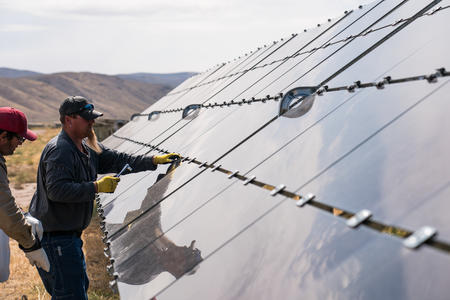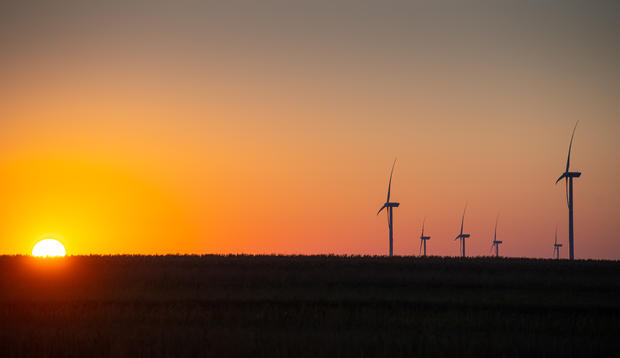By Karol Gobczyński, Head of Climate & Energy, Ingka Group
IKEA aims to become climate positive by 2030, by reducing more GHG emissions than the IKEA value chain emits, while growing the IKEA business. As the biggest retailer in the IKEA franchisee system, Ingka Group has an important part to play by reducing the climate footprint in its operations, customer deliveries, and customer travel, as well as providing sustainable services to their customers, enabling people to live within the planetary boundaries.
We all know the next nine years are critical to limit global temperature increases to 1.5°C. At Ingka Group we’re determined to be part of the solution. And the time for talk is over.
We’ve committed to the Paris Agreement and have set science-based targets. Now we’re implementing actions and testing new solutions. For us, making the switch to 100% renewable energy and increasing energy efficiency are two of our key actions on our journey to become climate positive by 2030.
We set ourselves a bold goal
At Ingka Group we decided early on that we needed to invest in renewable energy generation to meet the needs of our business and bring systematic change, at scale, to the energy market. Back in 2012 we therefore set a target as part of our first People and Planet Positive strategy to generate as much renewable energy as we consume across our operations by FY20.
Owning and operating wind and solar farms is quite a unique approach for a home furnishing retailer, but by investing in renewable energy generation on-site and off-site, we‘ve been able to turn energy consumption from only being a cost to becoming a source of revenue. Proving that it’s good business to be a good business.
And we exceeded our expectations
With EUR 2.5 billion invested over the past 11 years by Ingka Investments1 we’ve come a long way. Our ownership now includes 547 wind turbines in 14 countries, two solar farms and 935,000 solar panels on the roofs of IKEA stores and warehouses.
These investments have enabled us to exceed our RE100 goal of 100% renewable energy generation. In FY20 we produced 132% renewable energy2, giving us 1,747 GW of total renewable energy generation capacity. We’re using some of this energy to power our own IKEA stores, distribution centres and some of the factories producing IKEA products in North America and Europe.

But much remains to be done. And we’re going further and faster than ever before
Getting to 100% generation was an important milestone for us. Now, we’re working towards being powered by renewable electricity across all Ingka Group buildings by 2025 and having 100% renewable heating and cooling by 2030. All while increasing efficiency. Today 66% of our electricity consumption is renewable, and many of our buildings are using ground and air source heat pumps. To make this a reality, we’re continuing to invest in renewable energy and efficiency, with a focus on markets where we currently don’t own wind or solar farms, like China, Russia and India.
We’re facing similar challenges to many other companies. Many governments are still subsidising fossil fuels, and regulatory barriers and a lack of a stable frameworks are slowing down the investments in renewable electricity. Without a certification scheme for renewable electricity in place, we can’t source it credibly enough to avoid double counting. It will require the joint efforts of energy producers, businesses, and policymakers to scale renewable electricity generation and make it an easy and affordable choice for all.
Getting to 100% renewable electricity consumption, on-site
Our goal is for as much electricity as possible to be produced on-site. Today, we’re at 8%. Many of our stores already consume renewable electricity generated on-site. In Australia, the IKEA Adelaide store is being prepared to generate more renewable energy than it consumes and keep the renewable electricity attributes to cover their consumption. Where sufficient renewable electricity cannot be generated on-site, we secure renewable electricity from off-site generation, mainly our own wind farms and solar plants.
To make sure we match the consumption with the demand we must innovate and work with others to test and learn. We’re currently working with DNV GL and Becour to pilot tools for 24/7 matching of renewable electricity generation and consumption (hourly time matching). It is far more complex than annual matching, but will help us transition faster to only using renewable electricity each hour. This pilot includes five wind farms in Finland to 14 IKEA stores and warehouses in The Netherlands including their onsite solar panel installations. We hope that the tools developed will create new flows of renewable electricity from all Ingka Group generators to its different operations.
Retrofitting our buildings to renewable heating and cooling
By 2030, all our buildings should use only renewable heating and cooling. Technologies like ground and air source heat pumps enable us to extract heating and cooling from the air and ground, and will use renewable electricity.
But we can’t get there alone
We’re proud of the progress that we’ve made so far and we’re committed to continue to implement actions across our operations. But acting alone won’t get us to 100% renewable energy. We must work with others to innovate new solutions and create the market conditions for a society powered by renewable energy. For us, partnerships and collaborations has always been a cornerstone, and this is more important now than ever. In this critical time, we are calling on customers, companies and governments to join us on the journey. Change will come only if we work together, share knowledge and co-create solutions. This is why we are part of initiatives such as RE100, RE-Source, WBCSD and many others, and are advocating for policies and inclusive regulations that will drive the transformational change needed to meet the Paris Agreement. Together we can make a global switch to renewable energy and realise a 1.5°C world where everyone can thrive.
1 The investment arm of Ingka Group
2 Including scope 1 and 2 related energy consumption and part of scope 3, energy provided to Ingka Centres tenants.
